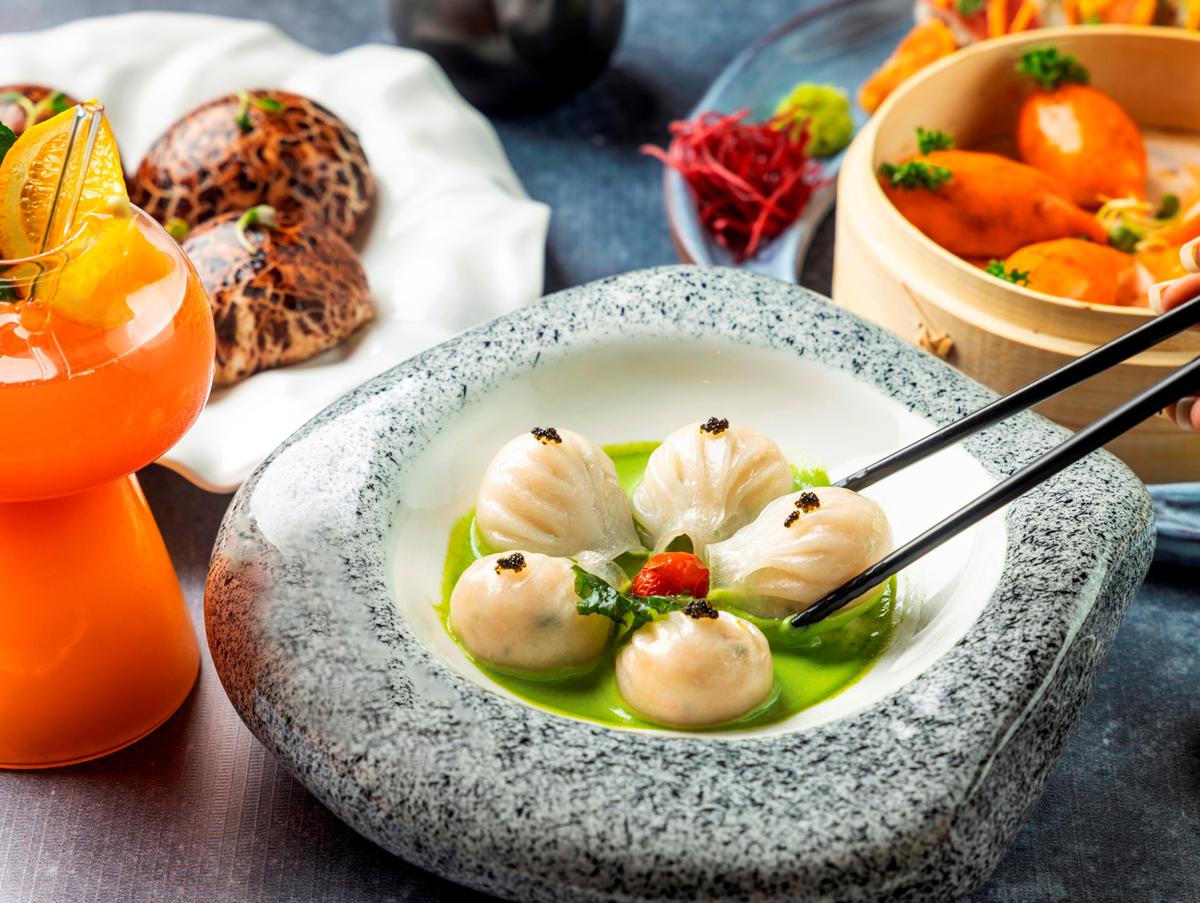
Korean jjigae and scallops from Hokkaido: Pa Pa Ya opens its doors to Chennai
The Hindu
Pa Pa Ya finally opens its doors in the city. We try its signature mix of playful experiments with Asian cuisine, from tuna tataki pizza to Korean jjigae
Chennai’s appetite for Asian food has been growing quick and strong in the past few years, from a straightforward pad Thai to exacting sushi and fiery kimchi. Having mastered all the diverse basics, gourmands of the city now have the chance to try something fun and playful. “The Chennai clientele is dynamic and well-travelled. They are familiar with world cuisines and are open to experimentation when they’re back home. It also helps that the city is located right on the sourcing channels of quality seafood from the far East to India,” says Zorawar Kalra, one of the partners bringing the upscale “modern Asian bistro” Pa Pa Ya to Chennai.
After a rather long wait and many test runs, the restaurant is finally opening to the public this weekend, making the city home to the sixth outlet in the country. The 115-seater space boasts a live sushi counter, private dining rooms, two bar setups and a balcony dining area with a view of Nungambakkam High Road.
The team takes its creative licence seriously — while good sushi forms the core of the menu, there is plenty of experimentation. The tuna tataki pizza, for instance, with a tortilla base that is crunchy, with strips of tuna piled high atop it. Ingredients are minimal and fresh, and the flavours speak for themselves, aided with just a little kick from a light wasabi mayo. Bite-sized and served as a finger food, the dish holds its own quite well, but its lightness also makes it a good accompaniment to their potent cocktails.
A more traditional option worth sampling is the jjigae, a Korean stew that, in this menu, finds itself listed among the soups. This one is not for the light-hearted, for its key ingredient — across vegetarian, chicken and seafood variants — is the gochujang, a red chilli paste that takes no prisoners. The heat is powerful, but does not make the mistake of masking the other ingredients, making it a fun explosion for those who can handle it.
As far as complexity of flavours go, however, the jjigae is an outlier. Most other dishes in the menu follow the norm of minimalism, letting sole star ingredients speak for themselves. For instance, the avocado carpaccio is a vegetarian version of the salmon carpaccio, a dish that traditionally involves just a thin strip of fish served raw. Slim slices of avocado rest in a long row, receiving minimal assistance from some light toppings.
Vegetarian options don’t end with the soup and carpaccio. The range of dimsum, which includes some sizable gyozas, are also playful with green produce: from an asparagus, corn and burnt spring onion dimsum to an intriguing truffle and cream cheese option. Having said that, this is clearly an establishment that takes pride in its seafood. The pla samrot gung features prawns whose sheer size would intimidate most king prawns the fish lovers of our Eastern coastline are used to. Cooked to a crunch and yet soft on the inside, they have a sweet tint to them that is offset by dollops of sour cream.
Zorawar, whose Massive Restaurants also owns popular dine-in chains like Farzi Cafe and Masala Library, is clearly proud of his seafood supply chain as an example. “Our tuna, including the bigeye tuna, comes from Japan, from specific waters that are known for some of the world’s best maguro [Japanese for tuna]. Our scallops, specifically, come from Hokkaido,” he states. In dishes wherein the fish is served rare or near-raw, quality raw material is well worth the cost. “Sometimes, some ingredients are just costly. But we still make it a point to be a fraction of the price of five-star establishments,” he adds.

Thomas Jefferson and Abraham Lincoln are two of the greatest presidents that the U.S. has seen. You probably know that already. But did you know that Jefferson made what is considered the first contribution to American vertebrate paleontology? Or that Lincoln is the only U.S. president to receive a patent? What’s more, both their contributions have March 10 in common… 52 years apart. A.S.Ganesh hands you the details…












